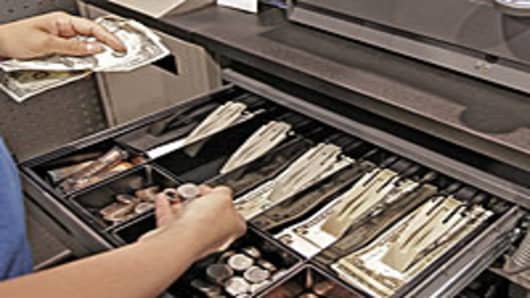Consumer spending in the US has turned into a tale of two cities in 2010, with an entire segment of consumers splurging confidently on the finer things in life, while another segment, concerned about unemployment and with little or no discretionary income, spends only on bare necessities.
This bifurcation of the US consumer has become apparent across the spectrum, from restaurants and grocery stores to products such as coffee and beer.
In each case, a consistent trend has emerged: people who have survived the worst of the economic downturn of 2008-2009 with secure jobs are spending the way that consumers normally spend at the tail end of a recession. But unlike the circumstances after previous US recessions, where spending rebounded across the board, an entire segment of American consumers has been left behind.
Steven Burd, chief executive of the Safeway supermarket chain, described the situation in an earnings call with analysts last month.
“There are some people that still feel challenged and there are others that don’t,” Mr Burd said in response to a question about consumer spending. “There’s an element of the economy [where people] haven’t been laid off, it’s been two-plus years, they’re comfortable it’s not going to happen [and there’s been] some recovery in their investment portfolio.
“They feel safe. They’re starting to spend. And then you’ve got another chunk of the economy that isn’t quite in the same position. So I think really consumer behaviour is a bit bifurcated here”.
Safeway’s same-store sales declined in the second quarter compared with the year-earlier results. Whole Foods , a pricier chain of grocery stores offering organic products, reported an 8.8 per cent increase in same-store sales for its most recent quarter compared with 2009.
“At least over the past year asset prices have rebounded and that helps high income individuals that would seem to align with the gut instinct that the upper end is spending and the lower end isn’t,” says Michael Feroli, economist at JPMorgan.
Sung Won Sohn, professor of economics at California State University and vice-chairman of Forever 21, the retailer, describes it as “barbell” shaped behaviour by consumers.
“People with money are not accelerating spending but are spending probably at the same levels as they have in the past – Mercedes and BMW are still going well,” says Mr Sohn. “But the middle-income folks in America have become extremely value-conscious.”
With the exception of McDonald’s , most low-priced fast-food restaurant chains have posted weak growth in the US in 2010. Large food companies, including Kraft and PepsiCo , have also struggled with domestic sales.
By contrast, same-store sales at higher-end restaurant chains such as Starbucks , Panera and Chipotle – where prices are higher than at fast-food outlets – have grown this year.
At the high end of the restaurant category, steak house chain Morton’s reported an increase in quarterly sales earlier this year.
At a time when US unemployment is 9.5 percent, and a similar-sized chunk of the workforce is underemployed or not showing up on the unemployment rolls, there’s a huge divide among consumers, says Al Moffatt, chief executive of Worldwide Partners, a network of owner-operated ad agencies.
“You’ll be around employed people, and it’s like, what recession?” Mr Moffatt says. “It’s incredibly well disguised. There’s some conspicuous consumption, but people skimp in other areas”.
Conventional wisdom holds that in a down economy, cash-strapped beer drinkers are likely to trade down for cheaper malt beverages, but that rule does not appear to be in effect in the US this year.
“Selected brands are doing well, but the whole low end is doing poorly now,” says Bump Williams, a Connecticut-based beer industry consultant. So far this year, shipments of beer in the US are down 2.6 percent, Mr Williams says.
The exception is in the high end of the beer sector where selected imports and super-premium beers are growing. The craft brewing segment, which includes speciality beers that come in 750ml bottles, is growing at a 15 percent clip in 2010, Mr Williams says.


